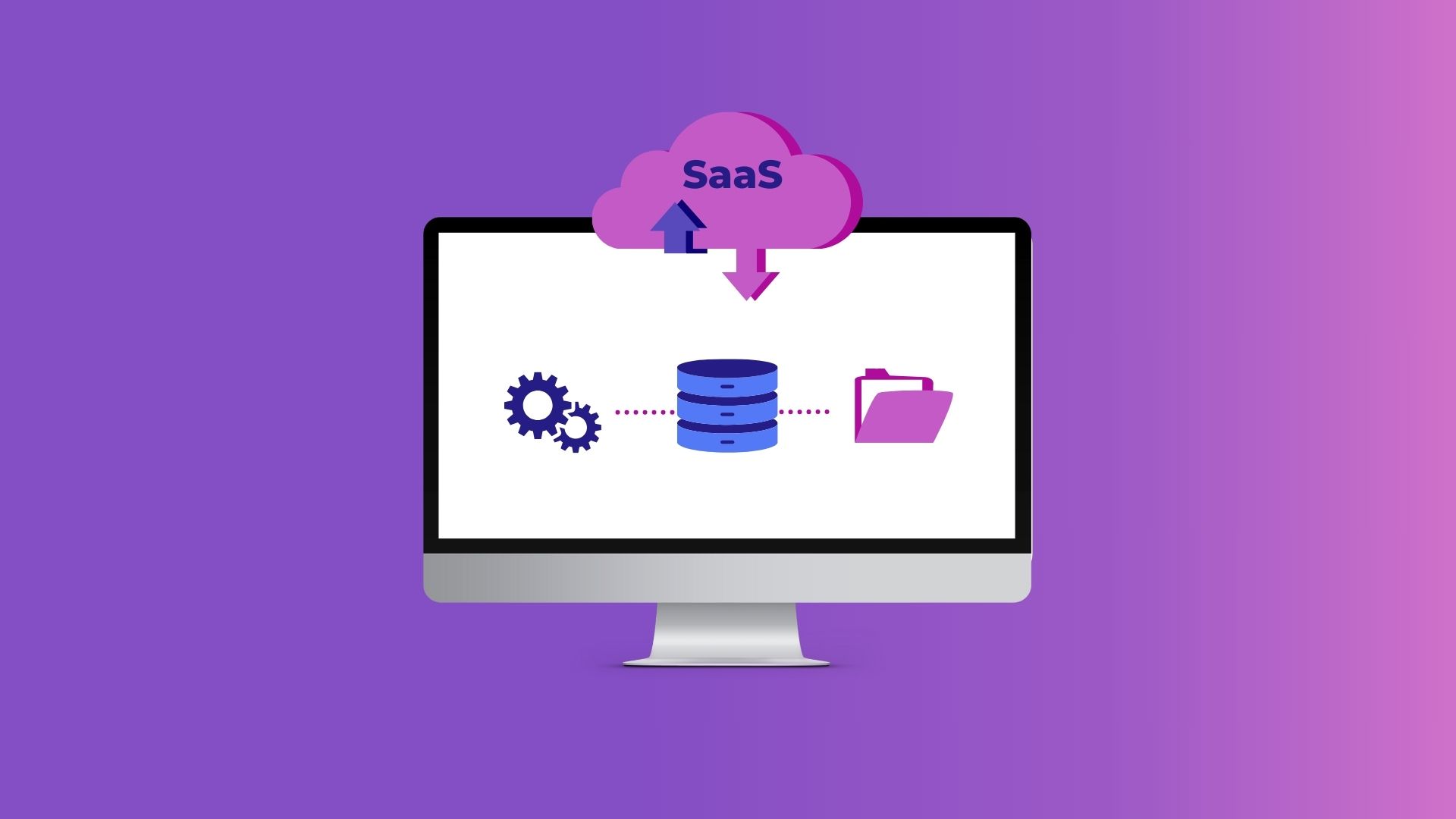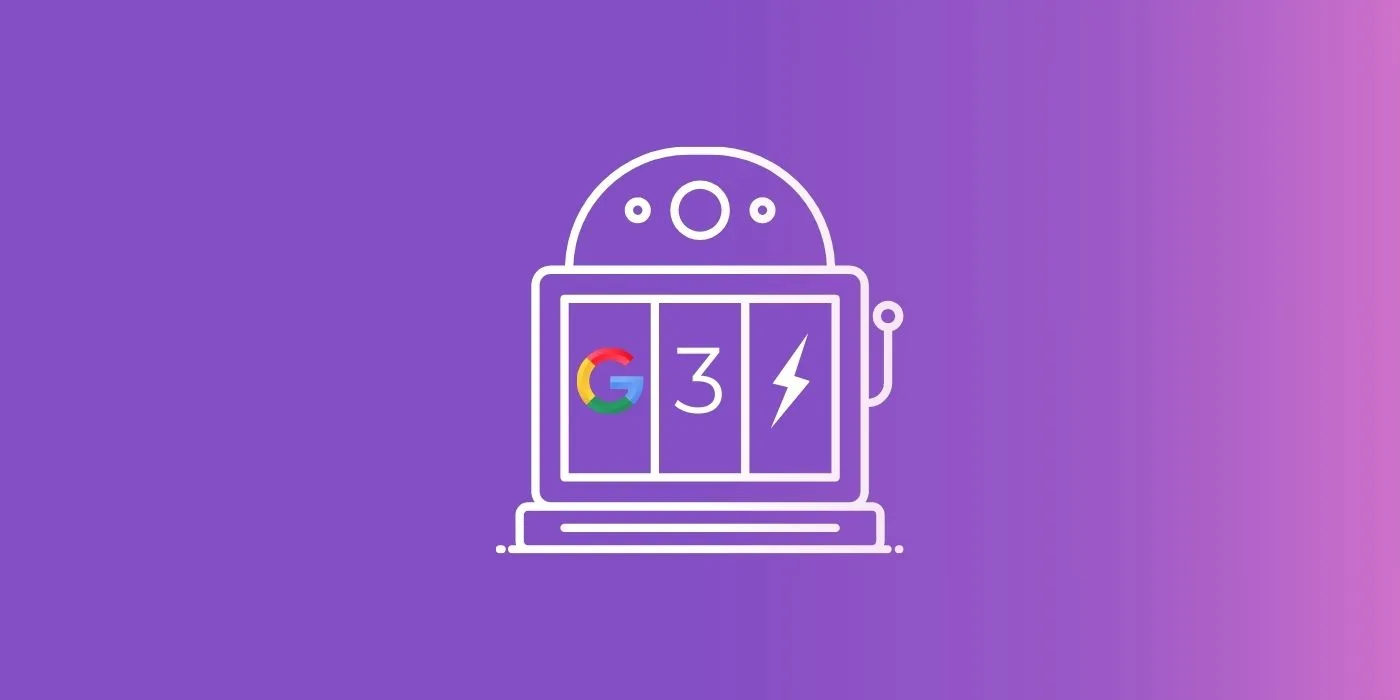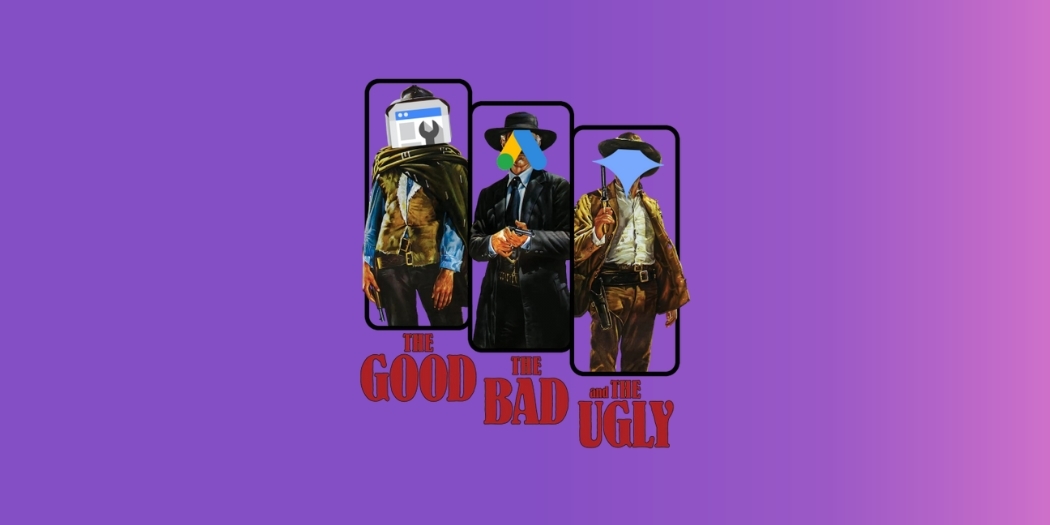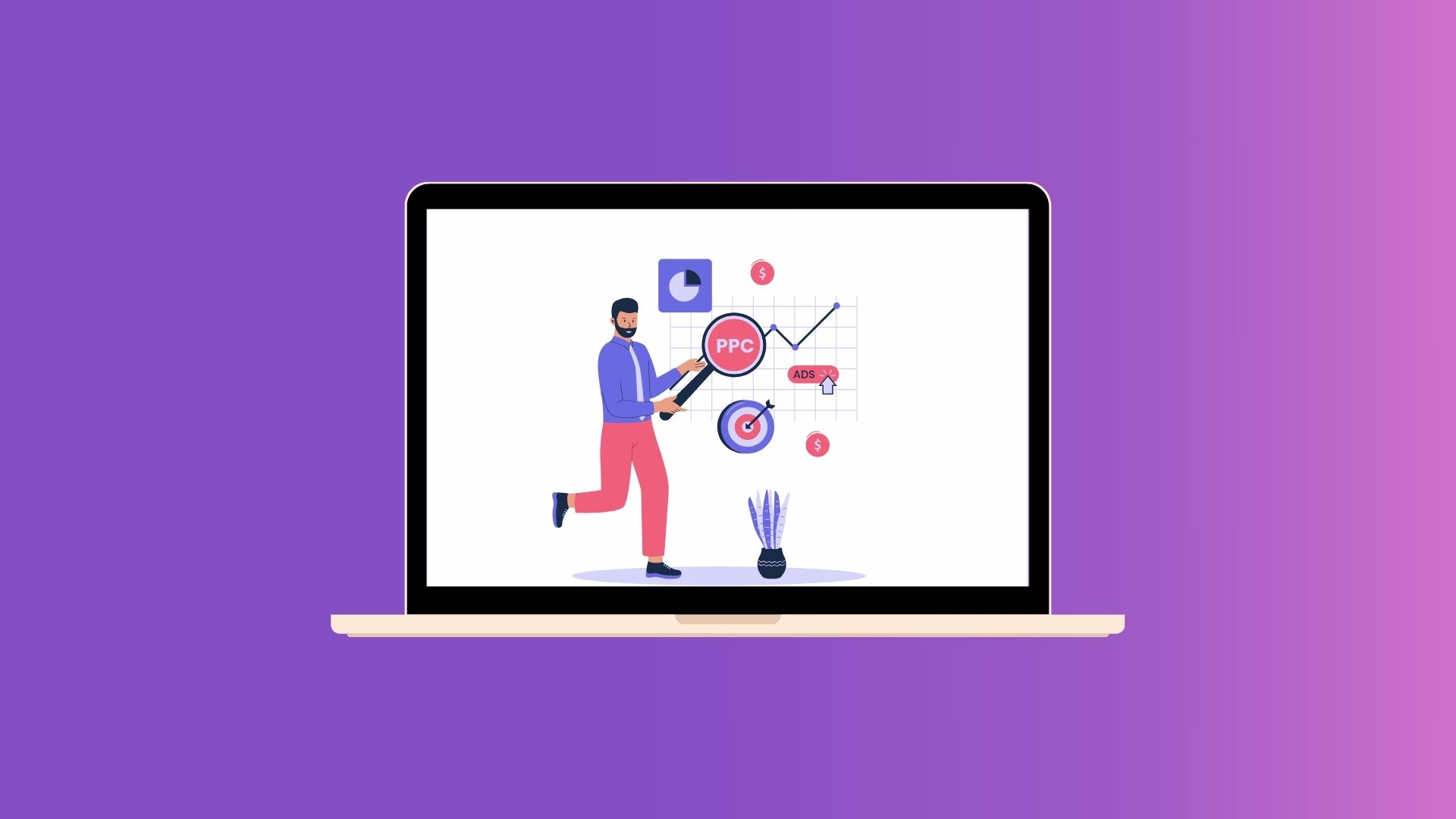Creating a Winning SaaS Marketing Strategy in 2025: Your Complete Guide

What is SaaS Marketing?
Spending hours designing software doesn’t automatically guarantee success. Yes, your product may offer unique features your competitors don’t have. But the question remains – how will your customers notice your software?
This is where effective SaaS marketing strategies come in. A SaaS marketing strategy is a plan of action that outlines how to attract, convert, and retain SaaS customers.
Unlike traditional marketing, a SaaS marketing strategy focuses not only on acquiring new customers but also on keeping them satisfied and loyal over time.
To create an effective marketing strategy for SaaS products, you need to understand your customer’s pain points, goals, and expectations, as well as measure and optimize your performance across the entire customer journey.
10 Steps to Craft a Successful SaaS Marketing Strategy
Creating a home-run SaaS product marketing strategy is challenging and rare in most cases. Maintaining a consistent approach is one feature of an effective marketing campaign.
Don’t worry too much, though, as you can follow our 10-step framework to develop a winning marketing strategy for SaaS businesses.
Step 1: Identify your target audience
The first step in any strategy is to develop an ideal customer profile. What’s your ideal buyer persona? Who will benefit most from your product or service? Identifying your buyer persona will give you some valuable information, that you will be able to use when crafting the strategy. This includes:
- Pain points
- Buying motivation
- Desired solutions
- Demographic challenges
After you crafter your ideal customer profile, the next step is to conduct market research:
- Does your product address one of the underserved needs in your target market?
- What insights do people have about your product features?
- Can your product adapt to the current trends in the market?
Remember that market research is an ongoing process, so don’t stop gathering information and continue testing out your advertising strategies.
Step 2: Get to know your competition
As is the case in every industry or business, the SaaS market is brimming with competition. If approached in the right way, however, competition can become a healthy factor among competitors.
Your direct and indirect competitors can unwittingly provide you with helpful information and data. By researching how your competitors are doing business, you will also discover your company’s weaknesses and build up on the things you’re already doing right.
Understanding your competitors is a vital part of SaaS marketing strategies, so make sure that this is part of your game plan.
Step 3: Define your value proposition
Grammarly’s recurring headline of “Great Writing, Simplified” is as simple and effective as you want a first impression to be. In just three words, Grammarly lets people know about the customers they’re targeting, the customer problems they can solve, and the actual solution that they’re offering.
This slogan-like headline is the starting point of what you call a SaaS value proposition. Creating a value proposition for your software should involve the following:
- A simple yet engaging headline
- Two to three sentences that support the headline
- Multiple bullet points to provide specific details about your brand
- Your brand’s image or logo
How do you create a unique value proposition? Remember that everything should be geared toward the customers’ needs.
With this in mind, you can include unique advantages, even if it’s just one specific detail. To gain their attention, customers just need to see one feature that they haven’t seen before.
Finally, everything should be simple and clear. You can always get creative and witty but be mindful of using only simple wordings to make your SaaS value proposition more relatable.
Step 4: Map out the SaaS sales funnel
After conducting market research and developing buyer personas for your target customer base, you can map out your SaaS sales funnel.
From a broader perspective, this funnel is your customer’s journey from noticing your product for the first time to renewing their subscription or membership.
Terms may vary, but an effective SaaS sales funnel should include these stages (in order):
- Brand discovery: Your customers’ first impression of your product. How are you promoting your software on sales calls or social media ads?
- Gaining interest: Your potential customer’s first engagement with your product. Did they sign up for your newsletter or did they book a free consultation with one of your sales agents?
- Individualized insights: This is when a customer tests your software for the first time. Are you offering a free trial or demo of your product?
- First purchase: A prospective client finally earned the “official customer” tag for purchasing your services.
Step 5: Test pricing
Now, let’s talk money. One of the factors affecting revenue generation in SaaS is pricing strategy. Getting your pricing strategy right could unlock a sustainable SaaS growth strategy for your product. A good pricing strategy should take into account:
- Your expenses
- Your competitors’ pricing
- The value that your paying customers get from your product
As for SaaS pricing models, here are a couple of examples that you can use:
- Fixed-rate: Allows customers to pay a flat rate, whether they choose a monthly or annual subscription. The downside of this model is there’s no room for price adjustments if customers want to include (or exclude) a certain feature.
- Usage-based: Allows customers to pay only for what they want to consume. This is a more flexible model, although your company’s revenue might dip or increase depending on the current trends in the market.
Optimizing your pricing strategy could pose a short-term risk, but it’s important to think about the bigger picture in this facet of your SaaS market strategy.
Step 6: Try out different customer acquisition strategies
One of the tips for getting long-term clients in SaaS is knowing where the right channels are. Depending on your business model, here are the best customer acquisition channels in the SaaS industry:
- Search engine optimization (SEO)
- Email marketing
- Content marketing in social media
- Cold calls
- Paid ads (Google Ads, Facebook Advertising, influencer marketing, affiliate marketing)
- Referral marketing
- Lead or demand generation
All these acquisition channels are effective, but you have to know which one works best for your product. Some tips include knowing where your competitors are getting customers, pre-testing your marketing strategies, and analyzing the platforms where your customers are more active.
Step 7: Build trust and credibility with your audience
Trust and credibility are also very important for SaaS companies, as they affect their reputation and conversions. Potential customers are more likely to buy from and stay with SaaS companies that they trust and respect.
To build trust and credibility, you can follow these practices:
- Keep your promises: Deliver on your value proposition and provide a reliable service to create a good customer experience.
- Seek and act on feedback: Listen to what your customers have to suggest. Use this feedback to improve your service, and to show your customer that you listen to them.
- Update and educate your audience: Keep your audience informed and engaged with your product and industry. Do that by providing regular updates and announcements.
- Invest in referral marketing: This can help you acquire new customers who are more likely to trust your product based on word-of-mouth. Referral marketing can also increase loyalty, retention, and satisfaction, as well as reduce your customer acquisition cost.
Step 8: Align your marketing and sales teams
Alignment between the marketing team and sales teams is crucial for many SaaS companies because it affects their efficiency and performance.
With sales and marketing teams working together, you have a higher chance of generating qualified leads, as well as increasing customer satisfaction rate, and, ultimately, retention.
However, aligning two teams working with different processes is not an easy task. Here are some easy ways on how to do it more effectively:
- Hold regular meetings and reviews: The marketing team and sales can update one another with regular meetings to review their plans, progress, and results.
- Provide training and coaching: This kind of knowledge exchange will help your team members improve their skills and overall competencies.
- Define common goals and metrics: Marketing and sales teams can agree on the overall objectives and KPIs of their campaigns (like revenue, conversion rate, or customer lifetime value).
Step 9: Work on retaining existing customers
Getting existing customers to commit long-term is the key to success in the SaaS marketplace. It’s one thing to get a potential customer piqued with interest; it’s another to convince them to renew their subscriptions.
So how do you optimize your best SaaS marketing strategies to acquire long-term customers? Here are some tips to get started:
- Design a user-friendly interface with clear-cut instructions for good customer experience
- Conduct customer satisfaction surveys from time to time
- Regularly interact with your customers
- Work on upgrades and additional features
- Prioritize customer support and help center
Another customer retention strategy that you can utilize is implementing customer loyalty and SaaS referral programs. It’s always an attractive way to engage both current and potential customers while encouraging them to get into the “spend more to earn more” scheme.
Your customer loyalty program could include perks like getting cash back, unlocking higher-tier memberships, earning redeemable points, or getting discounts via a SaaS referral program.
Step 10: Work on customer success
SaaS is a subscription-model business, so if your SaaS company wants to have a growing revenue, you need to encourage clients or customers to renew their accounts.
To be able to do that, you need to invest a chunk of your marketing budget in your customer success strategies.
According to the 2022 Customer Success Index by Gainsight, SaaS providers spend at least 6% of their revenue on customer success.
Having said that, customer success in SaaS business is more than just responding to your clients’ queries.
You need to establish a good working relationship with your SaaS customers, and this process involves providing them with the following:
- Streamline customer onboarding
- Training and seminars
- Workflow outlining
- Business reviews on SaaS review sites
- Feedback and evaluation
In a nutshell, you need to ensure that your existing customers are getting the most out of your product. When they discover all the perks that come with your software, they won’t just renew their subscriptions and be your main source of monthly recurring revenue. They could also refer you to potential customers.
Measuring your success as a SaaS provider should be dependent on your long-term relationships with customers.
Traditional and SaaS Marketing: What’s the Difference?
SaaS marketing is different from other types of marketing because it involves selling a service that is intangible, constantly changing, and requires recurring payments.
SaaS marketing also has a fast sales cycle, a competitive landscape, and a high customer retention rate. Therefore, SaaS marketing requires a different approach than traditional marketing.
Some of the key principles of SaaS marketing are:
- Providing free trials or freemium models to attract and convert customers
- Optimizing SEO and PPC campaigns to drive organic and paid traffic to your website
- Creating engaging and informative content that showcases your value proposition and solves your customers’ pain points
- Leveraging webinars and podcasts to establish your authority, credibility, and thought leadership in your niche
- Building strong relationships with your customers through email marketing, social media marketing, and customer support
- Measuring and analyzing your key performance indicators and customer feedback to improve your product and marketing strategy
Your product has potential — let your effective SaaS marketing strategy unlock a myriad of possibilities. By following the key principles of SaaS marketing, you can attract, convert, and retain customers who will love your product and become your advocates. SaaS marketing is not for the faint of heart, but it can be the key to your success.
How Are SaaS Products Marketed: Key Channels
For your best SaaS marketing strategies to work, you need to find the right channels to put your ads and content on. A brilliant strategy won’t matter if you’re not able to reach your target customer base.
There are three main categories of marketing channels:
- Paid Channels: Examples include web display ads, paid campaigns on social media, guest posts, and email newsletters.
- Owned channels: These may be your company’s website or social media platforms like Facebook, Instagram, or LinkedIn.
- Earned channels: These are channels that you don’t pay for. You get access to earned channels organically, via word-of-mouth recommendations, referral program, and comments.
Let’s dive deeper into each of these channels.
SEO and organic search
A great way to promote your SaaS brand is through Search Engine Optimization (SEO). SaaS SEO refers to the process of directing organic traffic to your brand, which increases reach, engagement, and awareness among your target customer base.
A good SaaS SEO strategy typically involves relevant keywords and links from high-ranking, authoritative websites.
SEO is important because 68% of online experiences start with people typing in keywords on search engines like Google, Bing, Yahoo!, Yandex, and Naver among many others.
Here are some tips to get your SaaS business started with SEO:
- Research relevant, high-ranking keywords
- Analyze content and keywords coming from your direct and indirect competitors
- Invest in technical and on-page SEO
- Create engaging content
Content is still king in SEO, and that is the same case for your SaaS brand. To have the ability to craft engaging and relatable content, you must also identify the current challenges and trends in your target market.
If you don’t know where to start in terms of SEO and content marketing, consider partnering with a reliable and experienced SEO partner like Fortis Media. Contact us today and let us help you achieve your digital growth goals.

Paid media and PPC
Along with the returns that you can get from investing in organic SEO, your SaaS company can also benefit from a PPC (pay-per-click) campaign.
A PPC campaign refers to the process of paying for paid advertisements on search engines and social media platforms.
It’s a great way to see if a certain marketing channel fits your brand’s target customer base, as PPC campaigns will provide you with data on your ROI quicker than an SEO strategy.
An effective PPC campaign should see SaaS businesses doing the following:
- Personalize your ads based on the marketing channel and your target customer base
- Leverage your ads about market movement and seasonal trends
- Opt for retargeting to re-engage with target customers
- Maximize opportunities on the PPC landing page
- Consider other channels outside of Google Ads
While it’s true that data is quicker to get in a SaaS PPC campaign, you still have to exercise patience in testing different strategies and channels.
Email marketing
Email marketing is another channel that many SaaS companies are putting resources into. Email marketing is different from SEO and PPC strategies because you can have one-on-one interaction with each of your potential clients.
Through emails, you can personally get in touch with customers and address their specific needs.
Moreover, email marketing involves one of the most important aspects of SaaS business: encouraging your customers to renew their accounts.
Typical strategies for emails involve the following points:
- Map out your customer journey
- Nurture relationships, including Freemium subscriptions
- Offer training and workflows to encourage Freemium users to upgrade their subscriptions
- Provide regular reports and data charts for your users
Crafting engaging emails is a great way to attract new customers, but the main priority in SaaS email marketing is nurturing relationships.
You should take advantage of the personal touch that comes with emails and be consistent with your marketing efforts.

Videos and visual marketing
You already know that content is king when it comes to SaaS marketing techniques. Well-written content can engage your customer base and combining that with an effective video marketing strategy could pay dividends for your SaaS brand.
Once you successfully discover a suitable digital marketing channel to broadcast your video content, you can get creative as much as you want. There are tons of SaaS videos that you can create, including:
- Product demo videos
- Instructional videos
- Promo videos
- Customer testimonial videos
- Company background videos
- Free webinars
- Interviews with industry experts
A visual explanation of how you can help your customers should gain more attention to your SaaS brand. You can do out-of-the-box content with your videos, but make sure that everything is clear-cut and easy to understand.
Webinars and podcasts
Another way to market your SaaS brand is through webinars and podcasts. These are online events or shows that provide valuable information, insights, and tips to your target audience.
Webinars and podcasts can help you establish your authority, credibility, and thought leadership in your niche. They can also help you with lead generation, nurture relationships, and increase conversions.
Webinars and podcasts are effective because they allow you to interact with your audience in real-time or on-demand. You can answer their questions, address their pain points, and showcase your product or service.
You can also invite guests, experts, or influencers to join your webinars or podcasts and share their knowledge and experience.
To create successful webinars and podcasts, you need to do the following:
- Choose a relevant, engaging, and timely topic
- Plan and prepare your content and presentation
- Promote your webinars or podcasts to your email list, social media followers, and partners
- Use a reliable and user-friendly platform or tool
- Follow up with your attendees or listeners and provide them with additional resources
- Measure and analyze your results and feedback
Tools needed to execute SaaS marketing strategies effectively
Whether you are a startup or an established company, you need to have the right tools to help you achieve your SaaS digital marketing strategy goals. Here are some of the essential marketing automation tools that you need for your SaaS marketing efforts:
Market research and customer segmentation
Some of the tools that you can use for market research and customer segmentation are:
- SurveyMonkey: A popular online survey tool that allows you to create and distribute surveys to your target audience and collect feedback and insights.
- Google Trends: A tool that shows you the popularity and seasonality of various keywords and topics related to your niche and industry.
- SimilarWeb: A tool that provides you with web analytics and insights on your competitors’ website traffic, sources, keywords, and audience.

Value proposition and positioning
Some of the tools that you can use for value proposition and positioning are:
- Canva: A graphic design tool that allows you to create stunning visuals for your website, landing pages, social media, and marketing materials. You can use Canva to create eye-catching logos, icons, banners, infographics, and more that showcase your value proposition and positioning.
- Unbounce: A landing page builder tool that helps you create and test high-converting landing pages for your SaaS product or service. You can use Unbounce to highlight your value proposition and positioning, and capture leads and customers with clear and persuasive calls to action.
- Loom: A video recording and sharing tool that lets you create and share engaging videos for your SaaS product or service. You can use Loom to demonstrate your value proposition and positioning, and show your customers how your product or service works and solves their problems.
Content marketing and SEO
Some of the tools that you can use for SaaS content marketing and SEO are:
- WordPress: A powerful and user-friendly content management system that allows you to create and manage your SaaS website and blog. WordPress offers a variety of themes, plugins, and features that help you customize and optimize your website and content for SEO and user experience.
- Yoast SEO: A WordPress plugin that helps you improve your SEO performance and ranking. Yoast SEO provides you with suggestions and feedback on your website and content, such as title, meta description, keywords, readability, and more.
- SEMrush: A comprehensive SEO and content marketing tool that helps you conduct keyword research, competitor analysis, site audit, backlink analysis, and more. SEMrush also provides you with content ideas, templates, and optimization tips to help you create and rank high-quality content for your SaaS niche and industry.

Analytics and reporting
Some of the tools that you can use for analytics and reporting are:
- Google Analytics: A free and powerful web analytics tool that helps you track and analyze your website traffic, behavior, and conversions. Google Analytics provides you with various reports and dashboards that help you understand your audience, acquisition, behavior, and outcomes.
- Mixpanel: A product analytics tool that helps you track and analyze your user behavior, engagement, and retention. Mixpanel allows you to segment your users, create funnels, cohorts, and retention curves, and run experiments and tests to optimize your product and user experience.
- ChartMogul: A revenue analytics tool that helps you track and analyze your SaaS revenue, churn, lifetime value, and more. ChartMogul integrates with various billing and payment platforms, such as Stripe, PayPal, and Shopify, and provides you with real-time and accurate revenue data and insights.
Common Challenges of SaaS Marketing (and How to Avoid Them)
SaaS marketing is a unique and exciting field that offers many opportunities for growth and innovation. However, it also comes with its own set of challenges that can make it difficult to stand out and succeed in the competitive and dynamic SaaS industry.

Challenge #1: Differentiating your product from competitors’
One of the biggest challenges of SaaS marketing is differentiating your product from the many similar or alternative solutions available in the market.
With so many options to choose from, customers can easily get overwhelmed or confused by the features and benefits of each product.
Therefore, you need to communicate your unique value proposition and how your product solves your customers’ specific problems better than anyone else.
How to avoid it:
- Conduct a thorough competitor analysis and identify your strengths a
nd weaknesses, as well as your competitors’ strengths and weaknesses. - Craft a compelling positioning statement that summarizes who you are, what you do, who you serve, and how you are different from your competitors.
- Highlight your unique features and benefits on your website, landing pages, social media, and marketing materials.
- Use customer testimonials, case studies, and reviews to showcase your social proof and credibility.
Challenge #2: Educating your customers about your product
Another challenge of SaaS marketing is educating your customers about your product and how it works. Unlike physical products that customers can see, touch, or try before buying, SaaS products are intangible and complex. Customers may not understand the value or functionality of your product without proper guidance and support.
Therefore, you need to educate your customers about your product and how it can help them achieve their goals.
How to avoid it:
- Create engaging and informative content that explains your product and its features in simple and easy-to-understand terms.
- Use videos, demos, webinars, and podcasts to show y
- our product in action and provide tips and best practices.
- Offer free trials, freemium plans, or money-back guarantees to let your customers experience your product first-hand and see the results for themselves.
- Provide excellent customer service and support to answer your customers’ questions and address their issues.
If you are looking for a way to educate your customers about your product and increase your conversions, you might want to consider hiring Fortis Media, your partner in SaaS education and growth. Contact us today and let us help you achieve your SaaS marketing goals.
Challenge #3: Retaining and upselling your customers
The final challenge of B2B SaaS marketing is retaining and upselling your customers. SaaS products are subscription-based, which means that customers can cancel or switch to another provider at any time.
Therefore, you need to constantly deliver value and satisfaction to your customers and encourage them to stay loyal and upgrade to higher plans. You also need to reduce your churn rate and increase your customer lifetime value.
How to avoid it:
- Monitor your customer behavior, feedback, and satisfaction using analytics and surveys.
- Segment your customers based on their usage, preferences, and needs, and personalize your communication and marketing campaigns accordingly.
- Nurture your customer relationships using emails, social media, and loyalty programs.
- Provide additional value and incentives to your customers to upgrade to higher plans or buy more products or services.
SaaS Marketing Strategy: Key Takeaways
From the first impression down to customer retention, B2B SaaS marketing strategies involve a lot of brainstorming and content planning sessions.
There are vital things to keep in mind, including determining a suitable customer base, mapping out your customer journey, finding the right channels, analyzing your competitors, and optimizing your pricing plans.
The process may seem complex at first glance, but if you keep following SaaS marketing strategies and stay true to your brand’s value proposition, prospective customers will flow right through.
There are many components to remember, but the most important factor in all these is how your SaaS can cover the needs of your customers.
Whether you need help with content creation, SEO, social media, email marketing, or any other channel, consider partnering with Fortis Media. We can provide you with customized SaaS tactics that suit your needs and budget. Contact us today and let us show you how we can help you succeed.
FAQs About SaaS Marketing Strategies
What is a B2B SaaS marketing?
A SaaS marketing strategy is a plan that outlines how you will promote and sell your SaaS solution to your target audience.
A SaaS marketing strategy should include your value proposition, your marketing goals, your marketing channels, and your marketing tactics.
SaaS marketing strategies should also focus on attracting, converting, and retaining customers for your subscription-based product.
How can SaaS Companies create an effective SaaS marketing plan?
To create an effective B2B SaaS marketing plan, you need to follow these steps:
- Define your ideal buyer persona and understand their pain points, needs, and preferences.
- Identify your marketing goals and key performance indicators (KPIs) that align with your SaaS business model.
- Choose the most effective marketing channels and platforms to reach and engage your audience, such as SEO, PPC, content marketing strategy, social media, emails, webinars, and podcasts.
- Create and distribute valuable, relevant, and consistent content that showcases your product’s benefits and features, educates your prospects, and builds trust and authority.
- Optimize your website and landing pages to drive traffic, capture leads, and convert visitors into customers.
- Offer free trials, freemium plans, or money-back guarantees to let your prospects experience your product and see the results for themselves.
- Provide excellent customer service and support to answer questions, address issues, and reduce churn.
- Measure and analyze your marketing performance and results, and make improvements based on data and feedback.
How do I create a B2B SaaS marketing funnel?
A B2B SaaS marketing funnel is a visual representation of the stages that your prospective customers go through from becoming aware of your product to becoming loyal customers. A B2B SaaS marketing funnel typically has four main stages:
- Awareness: In this stage, you use various marketing SaaS channels and tactics to generate awareness and interest in your product and its solutions. You can use SEO, PPC, social media, content marketing, and PR to attract and educate your audience.
- Consideration: In this stage, you use lead generation, webinars, podcasts, case studies, and testimonials to nurture and qualify your leads and persuade them to consider your product as the best option. You can use emails, retargeting, and CRM to segment and personalize your communication and marketing SaaS campaigns.
- Conversion: In this stage, you use landing pages, demos, free trials, and calls to action to convince your prospects to take action and sign up for your product. You can use Unbounce, Loom, and Baremetrics to create and test high-converting landing pages, videos, and offers.
- Retention: In this stage, you use emails, social media, loyalty programs, and customer support to deliver value and satisfaction to your customers and encourage them to stay loyal and upgrade to higher plans. Encourage valuable user-generated content at this stage. You can use Mixpanel, ChartMogul, and Hotjar to track and analyze your customer behavior, engagement, retention, and feedback.
Read our other articles

iGaming SEO: The Ultimate Guide to Ranking iGaming Sites in 2025


How SEO and PPC Work Together: A Practical Guide


What is a PPC Agency? A Comprehensive 2025 Guide






